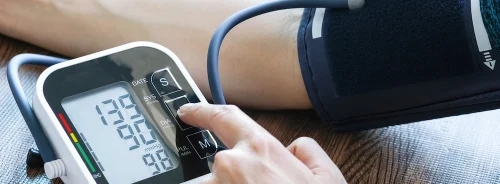HealthManagement, Volume 19 - Issue 4, 2019
Enhancing Atrial Fibrillation Procedure Flow Garners Profound Results
One year ago, Health Management published Aiming to heal 80 percent more hearts through the power of partnership. The article outlined the bold ambitions of Oslo University Hospital – a leading center in the treatment of Atrial Fibrillation (AF) – to expand access and enhance quality and experience for patients.
A year on, we look at the compelling results that are already being seen and what has been achieved by taking a value-based approach in collaboration with Johnson & Johnson.
Awareness of AF is increasing but the condition remains a new millennium epidemic. An estimated 11 million people in Europe have AF and, despite it more than doubling a patient’s risk of stroke and mortality, only 4% of eligible patients undergo ablation treatment.
The condition is placing a critical burden on healthcare systems committed to treating patients. At Oslo University Hospital pressure to treat more patients revealed a plethora of challenges, including:
- Long waiting list times (up to six months after referral)
- Over 25% of unutilized time in electrophysiology laboratory (EP lab), where catheter ablation is carried out
- Complex scheduling processes with considerable time lost between procedures
- A 10% patient drop-out rate.
Inefficiencies meant the hospital lost time and resources and nursing staff regularly had to work overtime.
The hospital was committed to do something about this and had a clear goal – to treat more patients, safely, and improve outcomes and efficiencies. Key, measurable objectives were set to:
- Optimize EP lab utilization
- Increase the total number of ablations carried out with a focus on AF procedures
- Reduce patient drop out rate.
To achieve this, the hospital and its multidisciplinary teams partnered with the Johnson & Johnson CareAdvantage team to carry out a comprehensive review (known as ‘Diagnostic Health Check’). From this, the current patient pathway was assessed through the process of ‘value stream mapping’ to identify the biggest hurdles and redesign an ideal pathway to deliver value and results.
First, changes were implemented in the out-patient department. Nurse coordinators were appointed to carry out more detailed and all-rounded pre-procedure assessments and patient education. A pre-defined referral management protocol was also put in place for referrals and follow-ups.
Next, in the EP lab a ‘quick changeover’ approach was implemented to improve changeover time between procedures to reduce unutilized time. This released time for more scheduled cases per day.
And finally, to ensure optimal uptake and implementation of the agreed procedures and protocols by all involved stakeholders, a training approach known as ‘Kaizen’ (a long-term approach to continuous improvement) was introduced.
Between 2017 and 2018, the results of this change have been profound. There has been a 24% increase in the number of AF cases, yet they have reduced waiting times after referral from six months to 17 weeks (less than 4 months). Unutilized time in the EP lab has reduced from 25% to 10%.
Including changeover time when using two different techniques, a 26% reduction in total procedure time for AF ablation has been achieved based on 10 observations, resulting in a significant decrease in nursing staff overtime.
Furthermore, the 10% drop out rate has now been reduced to zero.
Dr. Erik Kongsgård, Head of Electrophysiology, Oslo University Hospital, shared, “At each stage the improvements were designed to remove non-value adding activities and organize care around patients to achieve measurable and sustainable value-based change. We’re delighted that we are well on our way to what we set out to achieve, and ultimately more patients will see the benefits.”
To read more about what Oslo University Hospital has achieved or contact the Johnson & Johnson CareAdvantage team to discuss how you’d like to introduce a value-based healthcare approach, visit:
www.jnjmedicaldevices.com/en-EMEA/service/care-advantage
At the European Society of Cardiology (ESC) congress in Paris, 31 Aug – 4 Sept meet the Johnson & Johnson Biosense Webster team on Stand I500 in Hall 7, Level 2.
Or, at the European Association of Hospital Managers (EAHM) congress in Ghent, 11-14 Sept, meet the CareAdvantage team on Stand 22 and sign up to attend one of two Big Data and Digital Health congress workshops.
Click here to find out more about Johnson & Johnson







